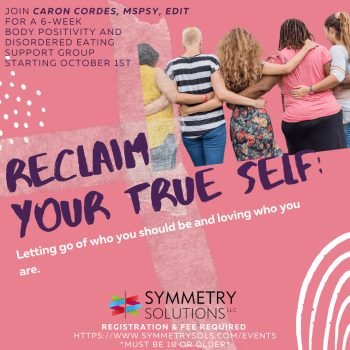Does anyone feel that some form of erotica is ever appropriate for helping a lower-drive spouse become aroused for sex? Is there some type of arousing media that would be appropriate for this purpose and not be considered pornographic?
First of all, I think it is important to correctly define the term “erotica.”
- literature or art dealing with sexual love.
- literary or artistic works having an erotic theme or quality
If you’ve ever gone to a movie where there is a passionate kiss, if you’ve ever read a book that describes a romantic relationship, if you’ve ever gone to a museum and seen art depicting human anatomy in a sensual way or a loving embrace, if you’ve ever listened to a song describing physical yearning; you’ve been subject to erotica. Sexuality and sensuality are such an integral part of the human experience that it is bound to be captured by artists, historians, musicians, poets, authors, photographers, etc. A simple love letter between spouses can be termed erotica. Some of our scriptures are forms of poetic erotica- Genesis 2:24-25:Therefore shall a man leave his father and his mother, and shall cleave unto his wife: and they shall be one flesh. And they were both naked, the man and his wife, and were not ashamed. Works of art, music and literature can open our personal human experience to one where we are more in touch with our spirit and body – where our souls are stirred – where inspiration can be elicited – and where we can join with our eternal companion on a deeper and more intimate level.
Therefore, my answer to your question is yes. Erotica can be a wonderful part of tuning into our personal sexual selves. It can awaken feelings and arousal that in turn help us connect with our partners. The key, of course, is to be able to discern wholesome and appropriate forms of erotica from what crosses the line into pornography. I’m sure there would be great disagreement among our members as to what would constitute “appropriate” erotica. I have no intention in getting into a discussion of specifics regarding this issue: I have hope and faith that married couples can respectfully decide for themselves what is of worth within their relationship. However, some questions that might be helpful in appropriate discernment could include: Does this material include anything that would be considered abusive, harmful or demeaning? Is the sole purpose of this material to be sexually explicit? Is the purpose of this material to make money off of sex?
I would caution regarding the question, “Does this make me feel uncomfortable?” There are many legitimate reasons why we may feel uncomfortable and we should not ignore those feelings. However, the fact remains that many of us are inappropriately uncomfortable with the feelings of sexual arousal due to our upbringings, history, etc. A better question would be, “Why does this make me feel uncomfortable?,” ” Is this an appropriate reason?,” and “Does my spouse agree with me that this falls under inappropriate material?” If not, “Why do we differ?” These types of questions asked between a couple can open up a new and introspective dialogue that can help intimacy to grow – even if disagreements are not resolved.
“Part of sexual growth is exploring different forms of sensual-sexual expression. Erotic themes are expressed in many ways – music, art, literature, and photography. The word erotic means that something sexual is suggested or depicted in the content, which in turn is likely to evoke sexual feelings in the person who is viewing or reading the material.”
Taken from Becoming Orgasmic by Julia R. Heiman, PhD and Joseph LoPiccolo, PhD
It is interesting that some of the literature choices included by these authors as “erotica” include such classics as The Fountainhead by Ayn Rand. The Outlander by Diana Gabaldon is an erotic piece of literature set within the realms of matrimony (it does contain strong language and violence as it is set in the 1700’s conflict between England and Scotland). Within Mormon culture many men are at a loss as to why their wives are enthralled with the Twilight Series by Stephenie Meyer. Yet this story of passion and everlasting love has left many women describing to me remembrances stirred of the courtships they experienced with their now-husbands and a renewed sense of desire to feel that passion again.
The Kiss by Gustav Klimt is a good example of passionate art.
Have You Ever Really Loved a Woman? by Bryan Adams is a good example of erotica in the form of music.
Pablo Neruda (Chilean) is considered one of the best hispanic poets of all time. In 100 Love Sonnets, Stephen Tapscott writes about his decision to translate these works: “We don’t have much of a tradition of love poetry in North America, and these poems seem to introduce attitudes of sensual joy of a sort that we – Anglophones, at least – have never been very comfortable with, nor very adept at expressing. Neruda seemed a natural choice, both because of his poems’ own worth and because of what he might contribute to our North American tradition, a voice of intelligent sensual joy.”
Here are a 3 samples that would be a great addition to a spousal love letter:
As we close this nocturnal door, my love
come with me, through the shadowy places.
Close your dreams, Love, enter my eyes with your skies,
spread out through my blood like a wide river.
Your body is smooth as stones in the water,
your kisses are clusters of fruit, fresh with dew.
As I live by your side, I live with the earth.
Full woman, flesh-apple, hot moon,
thick smell of seaweed, mud and light in masquerade,
what secret clarity opens through your columns?
What ancient night does a man touch with his senses?
Oh, love is a journey with water and stars,
with drowning air and storms of flour,
love is a clash of lightnings,
two bodies subdued by one honey.
Kiss by kiss I travel your little infinity,
your borders, your rivers, your tiny villages,
and a genital fire – transformed, delicious –
slips through the narrow roadways of the blood
till it pours itself, quick, like a night carnation, till it is:
and is nothing, in shadow, and a glimmer of light.
As a “Valentine’s Day exercise” I encourage married couples to do the following:
Put together a “sensual” playlist of songs (5-10) that help you tune into your erotic feelings for one another. Set aside some time to prepare a “romantic” setting (i.e. bedroom lit by a few candles- possibly aromatic, children are asleep or at grandparent’s home, you are both wearing something that you feel attractive in, etc.). Play the songs you have prepared (preferably on a “repeat” setting), embrace each other in a traditional dance hold and begin a slow, rhythmic dance to the music. Take the time during this prolonged “dance” to enjoy some eye contact, to stroke each other’s backs, hair or hands, to whisper soft expressions of love, to focus on how this embrace feels for you personally, to focus on how it feels to offer physical caress to your spouse, to softly kiss, etc. (really pay attention to your body and its responses). Allow for this exercise to take time, for arousal to take hold and for you both to sit with that arousal for a while before taking it to the next level. Do not hide from regular eye contact. You don’t have to look at each other every single minute of this exercise, but do so often – and for prolonged periods of time. Try to communicate with your eyes what you would say through your mouth. Cherish every touch, caress, stroke, and syllable uttered.
This exercise can be done with no sexual expectation – as a way to focus on physical proximity and feeling rather than sexual performance.
However, if you want to move forward with making love, take part in undressing the other – still having the music as a background. Move slowly. Enjoy taking the time for your own enjoyment and for the enjoyment of your partner. Do not limit yourselves to certain sexual expectations. Remember that orgasm is not the only nor primary goal of sexual intimacy. If someone climaxes too early, or not soon enough, etc… don’t let anxiety about these issues ruin the moment. Just enjoy whatever it is that does ensue. The goal is to enjoy shared touch and the feelings of arousal – whether or not orgasm occurs is not the point of this exercise.











